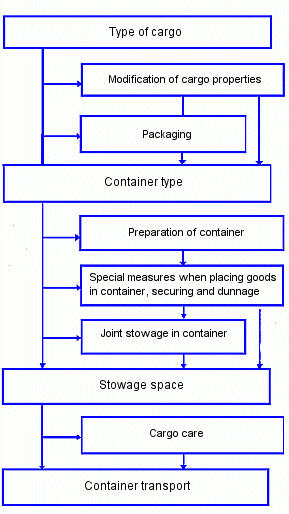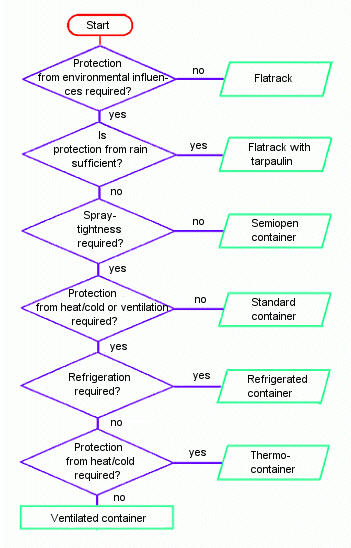As a result of development of the refrigerated container, the transport of highly perishable goods on flatracks in actively ventilated holds (e.g. on ro/ro ships), the naturally ventilated container and open containers, a wide range of options exists from which the ideal solution may be selected for each particular cargo (Fig. 52).
Figure 52: Adapting a cargo type to container transport conditions;
U. Scharnow 
Each of the four possible measures:
Modification of cargo properties and/or its packaging
Selection of suitable container type
Allocation of a suitable stowage space
Performing the necessary cargo care measures
has its limitations and, for many goods, cannot alone prevent transport losses or requires considerable expenditure, so calling cost-effectiveness into question. Furthermore, each of the four measures is also subject to certain restrictions.
As a rule, however, an optimum can only be achieved when several measures are used at the same time in the interests of maintaining cargo quality. How a cargo should in principle be allocated to the suitable container is shown in the flowchart in Fig. 53, which shows only a few selected decisions just to give an idea of the problems involved.
Figure 53: Selection of suitable container type;
U. Scharnow

It is possible in principle to make all goods suitable for container transport. To what extent quality degradation can be minimized will depend on how the issues of "fitness for container transport" and of cargo care are managed during transport.








